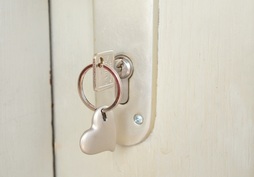A blog for all things dog-related: training, behavior, fun new doggie items, veterinary information and, of course, ways to enhance your relationship with your best four-legged friend!
1. Confident Leadership/Structure/Communication. Dogs are loyal and social creatures. Most want to do what makes us happy, which includes following the rules to ensure they don’t ever get on our bad side. But dogs and humans are two different species. We speak two different languages and have different ways of doing things (scent preferences anyone?) – and so the rules aren’t always clear. Contrary to all the amazing things dogs can do, they don’t have the ability to read our minds. So that means we have to be crystal clear about what it is that we want and expect in terms of the rules and acceptable behavior, and communicate that in as succinctly a way as possible for our dogs to learn and understand. Conveying these rules confidently and positively, consistently, and in small slices that can help your dog learn and succeed will create a relationship based on respectable leadership and clear communication. Dogs crave structure in order to be well-behaved – so give it to them and you will have a four-legged friend who loves to please you! (For more on creating this respectable leadership, see the article on my website, “R.E.S.P.E.C.T. – Find Out What It Means to Your Dog”). 2. Meet His Needs and He’ll Meet Yours. We all have needs in life. And when those needs aren’t fulfilled, we get a little anxious, cranky, maybe even unruly. Just as you have needs, so does your dog. There are the obvious needs – like food, water, and shelter – but also the needs for exercise (as an outlet for energy, can be mental and/or physical), training (to teach important life skills) and socialization (to build confidence) – both described below, attention (to strengthen your bond), leadership (as mentioned above) and love (who doesn’t want this?). When these needs aren’t met, that’s usually when we see behavior issues - such as elimination in the house, chewing, barking, nipping, dominance, or “crazy” boundless energy. Give your dog a productive outlet for his energy and he’ll be happy to lay quietly and watch your favorite TV show with you in the evening. Providing your dog with these necessities creates balance and harmony on all fronts.
3. Training/Building Life Skills. This takes many forms. First there’s the general obedience – a strong set of commands such as sit, down, stay, come, etc. that your dog can learn to perform in a variety of settings, around a variety of distractions, so they become second nature to him (just like how reciting your alphabet is for you). You can get creative and teach as many commands as you’d like! Once you have these skills under your dog’s proverbial belt, you can use these to direct him as to what behavior you expect to see from him in a given situation (for example, asking him to go to his “place” when someone comes to the door instead of rushing your guests upon entry). Having these skills and utilizing them in real-life scenarios not only gives your dog plenty of practice performing his skills, it also teaches him what he should be doing while you are doing something else (like laying calmly in the kitchen while you cook dinner instead of rough-housing with the cat in the other room). As a result of practicing these skills, your dog will also learn valuable life skills, such as house manners, social manners, patience and self-control – all very important aspects of helping to keep his relationship with you a happy and healthy one! 4. Socialization. The only way for a dog to become a confident member of society that can handle social situations is through exposure – and much like you teach your child in ways to build confidence, interpersonal skills and manners, a dog needs to be taught as well. If you want him to be a dog that will calmly sit with you at cafes in the middle of town, or go with you to a dog park on a nice afternoon, he needs practice in small slices to learn how he can handle himself in these types of situations. You’ll often find that these small slices involve breaking a situation down into many smaller increments to practice before being able to fulfill the final outcome – i.e. allowing your dog to watch the hustle and bustle of town at a distance over and over again, gradually getting closer to the distractions on repeat exposures, before trying to lay calmly in the center of all of it while you try to enjoy a sandwich (which usually doesn’t go well the first few times otherwise). 5. See your dog for who he is, not who you think he should be. We humans are all individuals. We are stronger in some areas of our lives, and weaker in others; we are better than some people at some things, and need help or coaching from people at other things. My parents accepted a long time ago that I was going to become a canine behavior consultant and not a brain surgeon. And when they decided to be proud of me for who I am, I’m sure we all became happier for it. The same is true for our canine friends. All dogs are also individuals. Some are lightning-fast at learning and some are confident right out of the womb, while others may be slower at learning or insecure with other dogs or uncomfortable in noisy situations. It doesn’t mean there’s anything “wrong” with them. It just means we have to accept them for who they are and learn to work with them in a way that will help them bring out the best side of themselves. For example, there are steps you can take to build up your dog’s confidence around other dogs. It may still mean that he’s not going to be overly social or enjoy the company of other dogs over you if that’s just who he is. It’s important to have realistic expectations of who you are sharing your life with. For anyone who’s ever been married, I’m sure you have realized that when you stop trying to make your spouse into who you think s/he should be instead of who s/he is, your marriage blossomed. The same goes a long way with our canine companions. For help in applying any of these key elements into your relationship with your own dog, contact Maria Huntoon at (845) 549-0896 or [email protected]. Together, you can create the human-canine relationship of your dreams!
0 Comments
Your comment will be posted after it is approved.
Leave a Reply. |
AuthorMaria Huntoon, CBCC-KA Archives
April 2020
Categories |

 RSS Feed
RSS Feed






